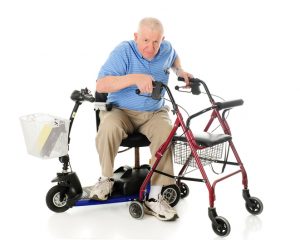You are having ankle surgery and the doctor says you must be non-weight bearing on the affected ankle afterward, but what does that mean?
What is Non-Weight Bearing
The term non-weight bearing means you must avoid putting any of your body weight on the ankle for a designated amount of time. How does one remain non-weight bearing after surgery?
Why Being Non-Weight Bearing Matters?
When a physician puts in a non-weight bearing order it is because there is no way to know how much weight your foot or ankle can tolerate without causing damage. For this reason, non-weight bearing includes even allowing the foot to touch the ground.
How to Stay Non-Weight Bearing?
It might sound impossible but it is easier to manage than you might think. The trick is to have the right tools to help you get around without letting the foot touch the ground. The most common approach is to use crutches. If opting for crutches, make sure a medical professional provides instructions on how to use them. They must be properly adjusted to avoid putting stress on your arms and shoulders. Other options include:
Knee Scooter
A knee scooter looks like a bicycle but instead of a seat, it has a knee pad. You put your knee on the affected side on the pad and then use the other foot to push yourself forward. Your ankle and foot are safely tucked behind you to prevent any weight bearing. Like a bike, the scooter has brakes and handlebars to help you control your movement.
Seated Scooter

Just like the knee scooter but you sit on the seat instead of resting your knee on it. There are both manual and electric seated scooters available. The manual you push using the good leg and the electric are driven by a motor.
If you want to try either scooter, they are available for you to rent or buy.
Contact Orthopedic Specialists
It is not easy to remain non-weight bearing after surgery but it is important. If you ignore the doctor’s instructions, you might cause damage that you will need further surgery to fix it.
Return to Blog